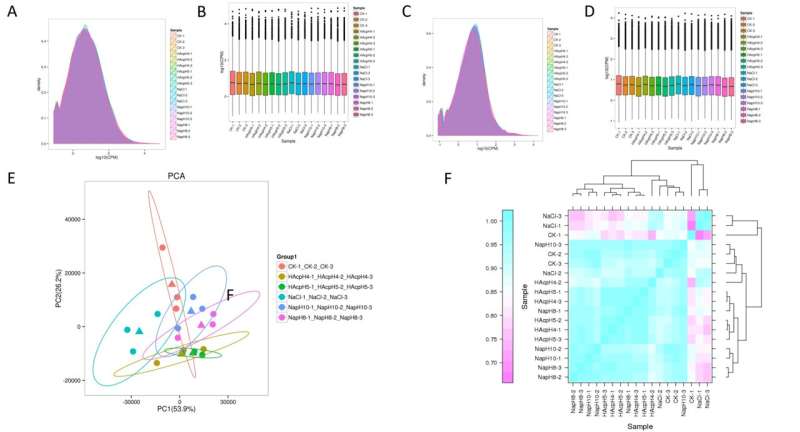This article has been reviewed according to Science X's editorial process and policies. Editors have highlighted the following attributes while ensuring the content's credibility:
fact-checked
peer-reviewed publication
trusted source
proofread
Scientists reveal regulation mechanism of soybean cyst nematode responses to chemical signals

Soybean cyst nematode (SCN, Heterodera glycines Ichinohe), is a devastating pathogen in soybean. The infective juveniles of nematodes can use phytochemical signals (semiochemicals) released into the rhizosphere as important cues for host seeking, host locating and penetrating.
Disrupting host-seeking signals to prevent nematode infection is a promising approach to control nematodes in the soil. The attraction and repellence of nematodes to chemical signals are closely tied to their chemosensory system.
Based on full-length transcriptome sequencing, a research team led by Prof. Wang Congli from the Northeast Institute of Geography and Agroecology of the Chinese Academy of Sciences has chosen soybean cyst nematodes as a model system to investigate plant-parasitic nematode behavior and gene expression changes in response to acidic and basic pH and salt signals.
This study was published in the Journal of Agricultural & Food Chemistry.
Transcriptome sequencing indicated that 3,972 novel genes and 29,529 novel transcripts were identified. Sequence structural variation during or post transcription may be associated with the nematode's behavioral response.
The functional analysis of 1,817/4,962 differentially expressed genes (DEGs) showed that signal transduction pathways, including transmembrane receptors, ion channels and Ca2+ transporters, were activated, but pathways involved in nematode development (e.g., ribosome) and energy production (e.g., oxidative phosphorylation) were inhibited.
The activated transmembrane G-protein coupled receptors included chemoreceptor Srsx, Wnt receptor MOM-5 (frizzled 1/7), dopamine receptor F59.D12.1, neuropeptide receptor 18, M3 acetylcholine receptor, and hormone thyrotropin receptor.
Additionally, nicotinic acetylcholine receptor, γ-aminobutyric acid receptor subunit beta, and guanylate cyclase receptor 18 could regulate ion channels, while ion transporters plasma membrane Ca2+ ATPase, ion channel voltage-gated calcium channel and transient receptor potential channel TRP-1 (TRPC4) were also activated.
The receptor activation and inhibition in growth and development indicated that nematodes sustained energy balance by regulating metabolic pathway in favorable conditions, which also explained why soybean cyst nematode disease is severe in acidic, basic or high salt soil.
A regulatory model responding to pH and salt ion stimulation was established by the combination of DEGs and protein-protein interaction analysis. The findings from the model suggest that these identified receptors and ion channels might be potential targets for nematicides to control plant parasitic nematodes or drug discovery to control human or animal parasitic nematodes.
More information: Ye Jiang et al, Full-Length Transcriptome Analysis of Soybean Cyst Nematode (Heterodera glycines) Reveals an Association of Behaviors in Response to Attractive pH and Salt Solutions with Activation of Transmembrane Receptors, Ion Channels, and Ca2+ Transporters, Journal of Agricultural and Food Chemistry (2023). DOI: 10.1021/acs.jafc.3c00908
Journal information: Journal of Agricultural and Food Chemistry
Provided by Chinese Academy of Sciences





















